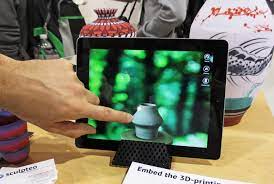Choosing the Best Finishing Method for Your 3D Prints

3D printing is rapidly changing the way we create and manufacture products, from simple prototypes to complex machinery. One of the most important stages in 3D printing is the finishing process, which can significantly enhance the final product’s appearance and durability. Choosing the best finishing method is crucial to achieve the desired results, so in this article, we’re going to explore different finishing techniques to help you choose the right one for your 3D prints.
Sanding
Sanding is the most basic and popular finishing method, which can be done using sandpaper or a sanding sponge. This method is effective in removing the uneven surfaces caused by the printing process, as well as blending ridges, lines, and other imperfections. Sanding can be time-consuming, especially if you have a large object, but it is useful to create a smooth surface and prepare the model for painting or coating.
Painting
Painting is a finishing method that is often used to improve the look of a 3D print. There are different types of paints such as acrylic or oil that can be applied manually with a brush or sprayed using an airbrush. Before painting, it is essential to prime the surface, which helps the paint adhere better. Painting can also protect the object from UV rays and weather conditions.
Polishing
Polishing is a method that uses a polishing wheel or compound to smooth the surface and bring a high gloss finish to your object. There are different polishing compounds available depending on the material you’re working with, and the process requires attention and patience. Polishing can remove scratches and other blemishes, making the surface look shiny and sleek.
Coating
Coating is a finishing method that can be used to protect the 3D print from damage, enhance its durability, and create a glossy or matte finish. There are different types of coatings available such as epoxy, resin, or varnish. The process involves applying the coating over the object using a brush or spray gun, and then letting it dry. Coating can give your 3D print a professional look and improve its longevity.
Conclusion
Choosing the right finishing method depends on the type of 3D print, your personal preferences, and the overall effect you want to achieve. Whether you are looking to smoothen the surface, add color, or protect the object, there is a finishing technique that can help you achieve your goals. Remember to take your time, test different methods, and experiment until you find the one that works best for you. Happy printing!






